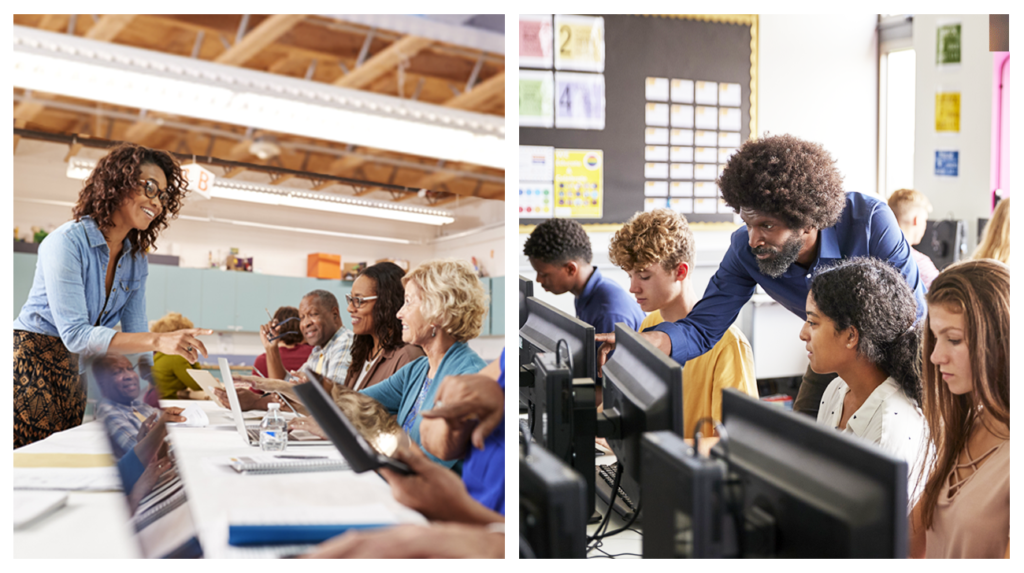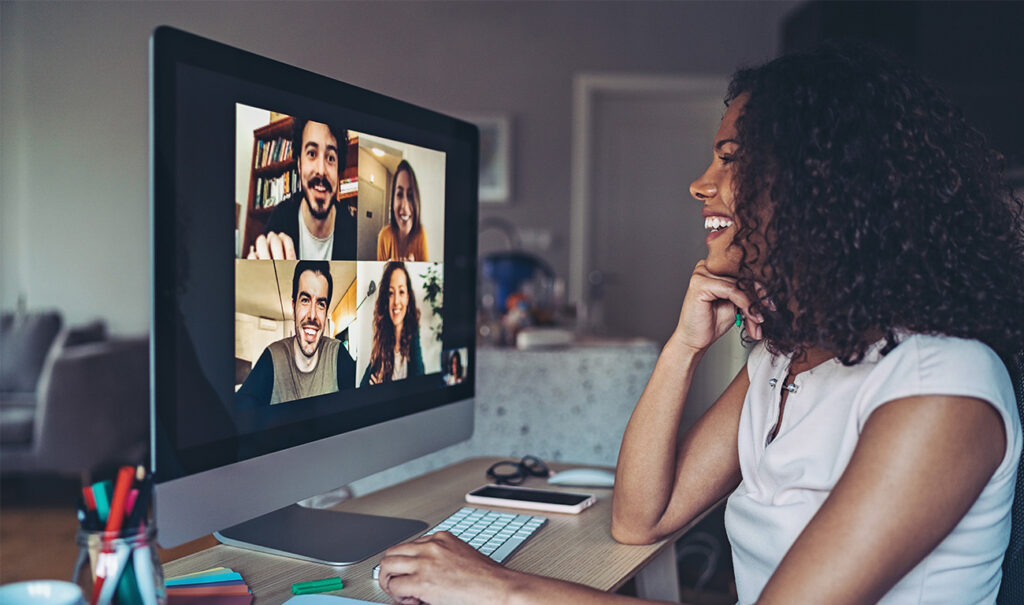Lose belly fat in three days!
NASA study shows chocolate improves brain function.
France prohibits work emails after 6 pm.
African countries plant a tree wall to contain the Sahara Desert.
Click to win a free iPhone!
One of these headlines is not like the others. Which one is it, and how can you tell?
The Internet has room for the best and worst of human behavior, from telling the honest truth to twists, omissions, exaggerations, boasts, and lies. As more people gain access to the internet by the day, it is almost certain that someone will believe and spread an outright falsehood. Worse, many innocent people are taken in by hoaxes and scams purporting to be true. Being able to tell what’s true and what’s not and distinguishing good sources from bad is an increasingly important skill today.
How can you figure out what’s true? There’s no clear formula. Extensive experience with online information will help you develop an instinct for identifying lies. Instructors whose learners rely primarily on online resources and spend a lot of time online should make learners aware of the dangers online.
Here are some tips to protect yourself from fraudulent websites and biased or unreliable news.
How to identify fraudulent websites
Scams are everywhere. Online scams abound, particularly in banking, shopping, supposed security checking websites, and online gaming or lottery sites. The aim is to steal personal or credit card information (phishing) or get consumers to pay money for nothing. Some sites replicate a well-known shopping or banking site, with a very similar address (URL), which makes it difficult to detect frauds. Others download viruses or malware onto your computer. How can you tell good websites from fake?
Appearance matters.
Be cautious of websites with shoddy design and poor images. Poor design can be an indicator of an unreliable source. However, note that even beautifully designed websites may be significantly biased or fraudulent.
Check the address.
Fraudulent websites often have odd names or the names of well-known sites with a misspelling or other modification. Check the URL in the address bar at the top of your browser to make sure the website name is spelled correctly and has no extra characters. For example, a phishing site might use the URL www.amazoon.com to trick you into thinking it’s www.amazon.com. Or the URL might include the real site’s name but have additional letters or numbers before or after. For example, www.2345amazon.com or www.amazon/shopping/shopeezee.com.
You need to check that the domain name (the words between ‘www’ and ‘.com’, ‘.org’, etc., is the name of the site that you’re looking for.
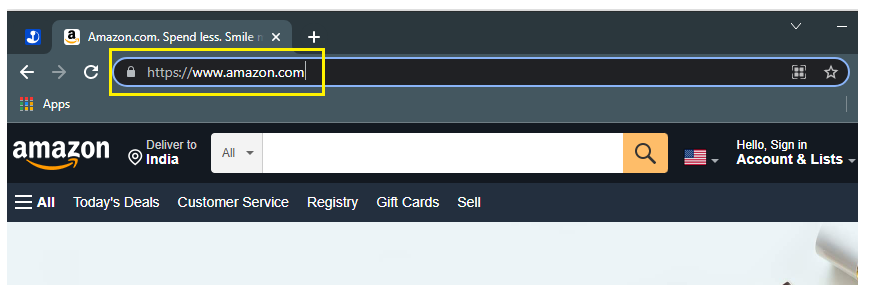
Check if the URL begins with http or https.
Legitimate sites will begin with ‘https’. Never trust personal information to a site that begins with ‘http’.

Look for the padlock icon.
A padlock icon in the address bar indicates that the connection between the site and server is secure. If the site uses ‘http’ and not ‘https’, the address bar will say ‘Not secure’ or ‘Unverified’ instead.


NOTE: ‘https’ and the padlock icon do not necessarily mean that a site is safe to use. It could be fraudulent or biased in other ways.
How to evaluate biased articles, claims, or news
Check the source.
First, check that the story has a source. The majority of viral rumors floating around are images or email and WhatsApp forwards that have no definite source. Often, stories are attributed to a source (NASA, for example) but have no connection to the supposed source.
If there is a source website, check that. Is the source a reputed website or news source? What does its website look like? Are the other stories, videos, and articles solid news content?
What do other people say about that source? If many people claim it is biased or untrustworthy, it probably is.
Check citations.
If a claim is made, what evidence is offered to back up the claim? You should be able to trace claims back to an original source. Does an article cite its sources? Is there data or an original source offered for its claims?
Check multiple sources.
Look for the same information in many different places. Do all of them say the same thing? If many reliable sources say the same thing, it’s more likely to be true. However…
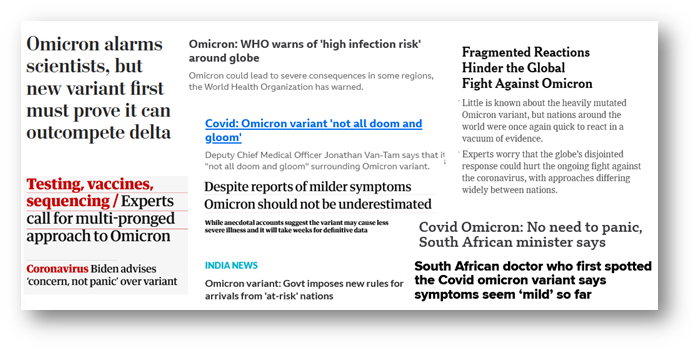
Watch out for confirmation bias.
Confirmation bias leads us to seek out sources that back up what we want to believe and discard those that contradict our beliefs. To avoid confirmation bias, it’s important to consult sources from different sides of the political or cultural spectrum.
Use a fact-checker.
For most digital natives, the first place to check the headlines at the beginning of this article would be Snopes.com. Snopes is one of the oldest and best-known fact-check websites, and it’s a good resource when you want to debunk a falsehood. Here are some fact-check sites you could use.
- Snopes.com: Fact-checks stories. The go-to website to fact-check viral forwards your aunt sends you.
- Media Bias/Fact Check: Fact-checks viral news stories and evaluates news sources for bias
- Politifact: Focuses on fact-checking stories from US politics
- Factcheck.org: Aims to be a nonpartisan advocate for US voters by fact-checking political news stories and speeches by politicians.
- The Washington Post Fact Checker: Home of the world- famous ‘Pinocchio’ rating.
[divider height=”30″ style=”default” line=”default” themecolor=”1″]
Who fact-checks the fact-checkers?
Every organization or institution is likely to have some bias based on its culture, its founders, or its employees. It’s important to be aware of possible biases and not trust any source, even a fact-checker, blindly.
For instance, here are the Media Bias/Fact Check reviews of Snopes and Politifact. Both are slightly biased toward a particular viewpoint.
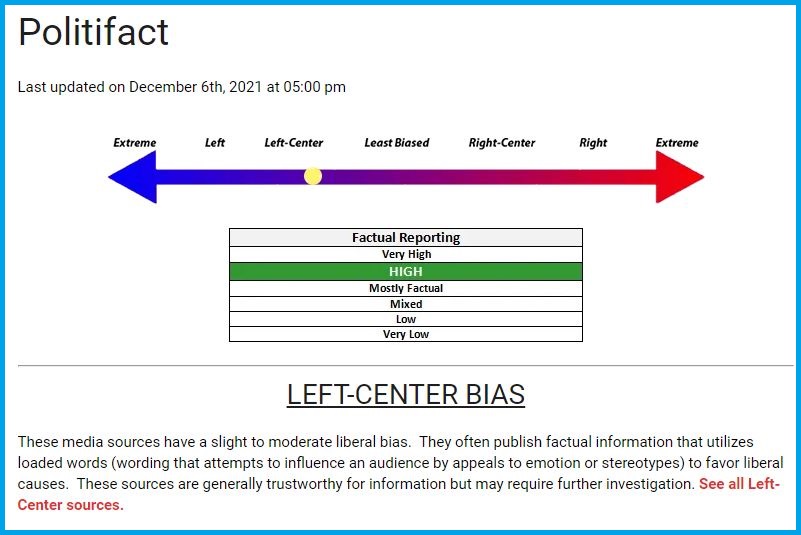
https://mediabiasfactcheck.com/politifact/
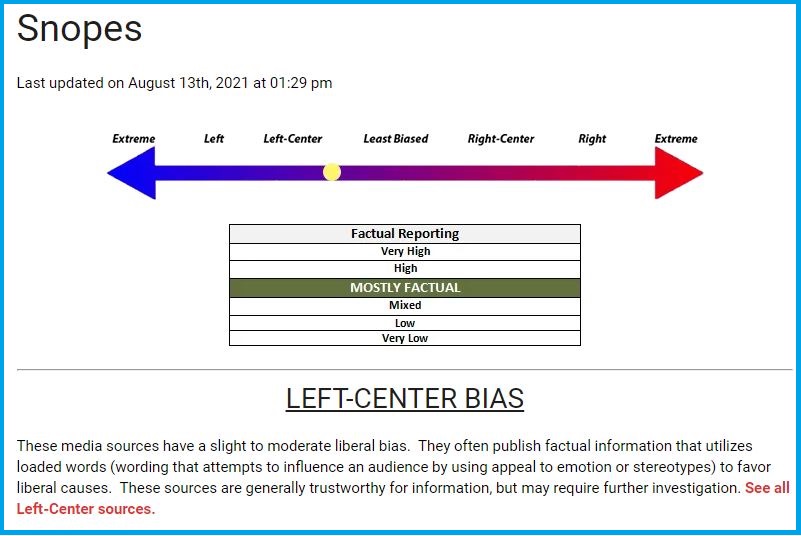
https://mediabiasfactcheck.com/snopes/
[divider height=”30″ style=”default” line=”default” themecolor=”1″]
The role of the instructor
While learners need to evaluate the sources they use for papers and dissertations, it’s even more important for them to evaluate the information they use to make decisions in their daily lives. Building digital literacy is a crucial step. Digital literacy might develop naturally over time and with experience, but focused lessons speed up the process. Including a short digital literacy module at the beginning of every course or making an online digital literacy course a prerequisite will benefit learners and improve the quality of their coursework. Instructors have a valuable role to play in developing knowledgeable digital citizens who can navigate online spaces safely and effectively.
The earlier articles in this series for developing digital literacy—Teaching Digital Literacy and Six Areas of Focus—provide helpful tips to instructors and students to get equipped with these skills.

